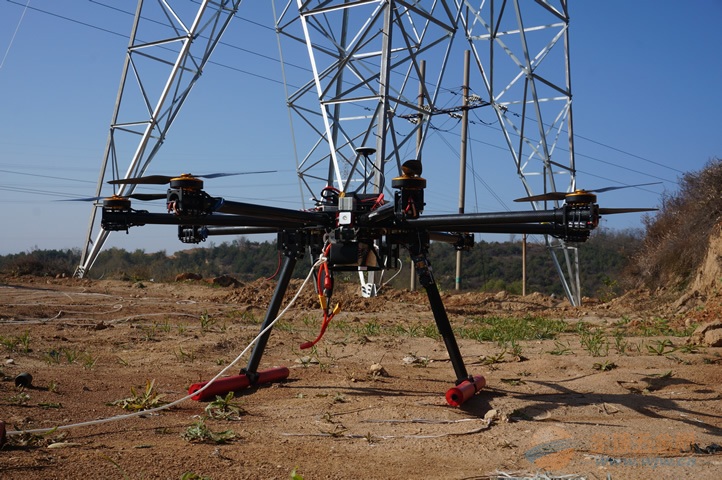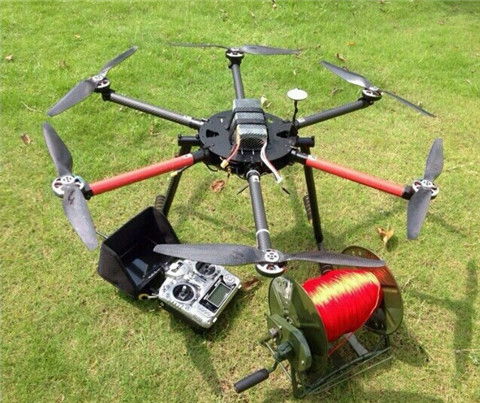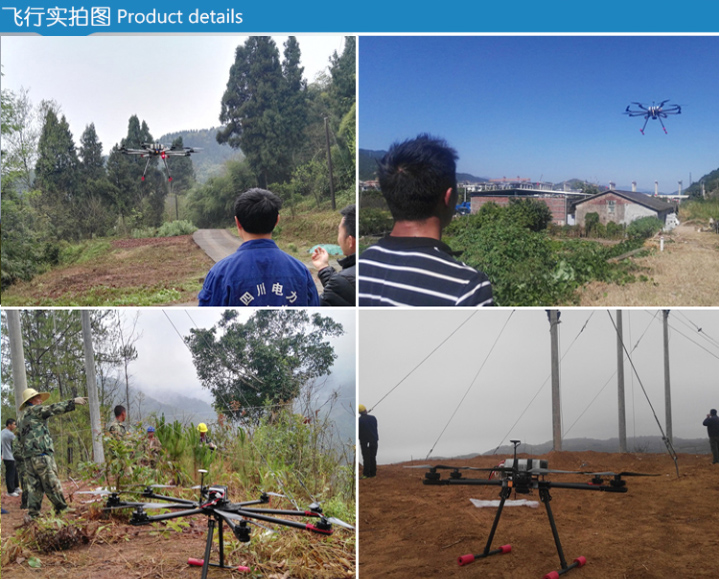How to choose power line string drone?

power line string drones change the traditional manual wire-drawing method and ensure the safety of wire-line workers. The work efficiency is 10 times that of labor, but the cost is one-tenth of than manual wiring.
1 Must have better endurance
UHV transmission lines generally have a length of tens or hundreds of kilometers. After patrolling each base tower, it needs to hover or circle the tower for several weeks to facilitate multi-angle observation. Therefore, it is required that the aircraft must have the corresponding endurance capability and be able to complete a line inspection work in one or fewer flights; the maximum range should reach 50KM, and the working radius should reach at least 5KM.
2 should have enough wind resistance
UHV transmission lines are usually built in high mountains or sparsely populated places, with complicated climate and terrain conditions. A place is surrounded by mountains and the only gap is the mouth of the Minjiang River. Both the strong and normal wind directions in the Minjiang Estuary are in the NE direction, with an average annual wind speed of 4.1m/S; the average annual wind speed in the urban area is about 3.4-5.4m/S (wind of 2-3), and the mountainous weather conditions are complex. Therefore, the aircraft must have good weather adaptability and control capabilities, and require wind resistance to level 5 wind to effectively ensure the necessary attendance rate.
3 Must have strong altitude adaptability
A certain place is surrounded by mountains and hills. The mountains have an average elevation of about 550 meters. The highest elevation of the northern peak and the Guling mountainous area is 1126 meters. Most of the transmission lines pass through these mountains. Transmission and distribution lines are designed and constructed according to the change of terrain. The height of all the poles and towers of each line is relatively uniform (generally 30 to 100 meters), with the characteristics of large changes in altitude and small changes in height to the ground. At the same time, transmission and distribution lines rarely have long-distance straight sections. Generally, there will be line turning (that is, corner towers) within the range of three to seven kilometers. The more complex the terrain, the more obvious. Therefore, it is required that the aircraft must have a strong altitude response capability, a relative flying altitude of 300 meters, and a stable control of the ability to fly with terrain changes at an altitude of 70 to 150 meters relative to the ground.
4. There must be sufficient load capacity
In order to meet the line inspection requirements, the aircraft should have a certain load capacity and be able to carry relevant monitoring equipment and accessories. Therefore, the aircraft must have good load flight quality and good safety.
5 The ability to randomly deal with suspicious targets
In view of the importance and complexity of route inspections, the system should be able to conduct fixed-point monitoring and analysis of suspected faults or hidden danger points. Therefore, the aircraft must have the ability to hover in the air or fly at a small radius and low speed.
The electric wireline aircraft has the following characteristics:
1. The aircraft is light and flexible, and the vibration of the fuselage is small;
2. The terrain requirements are low, the operation is not restricted by altitude, and there is no problem in high altitude areas;
3. Short take-off adjustment, high efficiency, and high attendance;
4, environmental protection, in line with energy saving and environmental protection requirements;
5. Easy maintenance, low use and maintenance cost;
6, can drag 3.5mm 12KG line to 1000 meters, higher efficiency;
7, can resist 6 gales, more secure;
8, DuPont with a load of 2.5mm can fly continuously for 25-30 minutes




